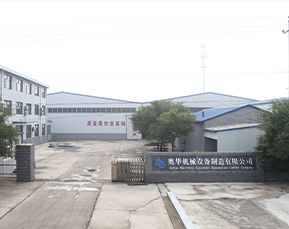 Afrikaans
Afrikaans  Albanian
Albanian  Amharic
Amharic  Arabic
Arabic  Armenian
Armenian  Azerbaijani
Azerbaijani  Basque
Basque  Belarusian
Belarusian  Bengali
Bengali  Bosnian
Bosnian  Bulgarian
Bulgarian  Catalan
Catalan  Cebuano
Cebuano  Corsican
Corsican  Croatian
Croatian  Czech
Czech  Danish
Danish  Dutch
Dutch  English
English  Esperanto
Esperanto  Estonian
Estonian  Finnish
Finnish  French
French  Frisian
Frisian  Galician
Galician  Georgian
Georgian  German
German  Greek
Greek  Gujarati
Gujarati  Haitian Creole
Haitian Creole  hausa
hausa  hawaiian
hawaiian  Hebrew
Hebrew  Hindi
Hindi  Miao
Miao  Hungarian
Hungarian  Icelandic
Icelandic  igbo
igbo  Indonesian
Indonesian  irish
irish  Italian
Italian  Japanese
Japanese  Javanese
Javanese  Kannada
Kannada  kazakh
kazakh  Khmer
Khmer  Rwandese
Rwandese  Korean
Korean  Kurdish
Kurdish  Kyrgyz
Kyrgyz  Lao
Lao  Latin
Latin  Latvian
Latvian  Lithuanian
Lithuanian  Luxembourgish
Luxembourgish  Macedonian
Macedonian  Malgashi
Malgashi  Malay
Malay  Malayalam
Malayalam  Maltese
Maltese  Maori
Maori  Marathi
Marathi  Mongolian
Mongolian  Myanmar
Myanmar  Nepali
Nepali  Norwegian
Norwegian  Norwegian
Norwegian  Occitan
Occitan  Pashto
Pashto  Persian
Persian  Polish
Polish  Portuguese
Portuguese  Punjabi
Punjabi  Romanian
Romanian  Russian
Russian  Samoan
Samoan  Scottish Gaelic
Scottish Gaelic  Serbian
Serbian  Sesotho
Sesotho  Shona
Shona  Sindhi
Sindhi  Sinhala
Sinhala  Slovak
Slovak  Slovenian
Slovenian  Somali
Somali  Spanish
Spanish  Sundanese
Sundanese  Swahili
Swahili  Swedish
Swedish  Tagalog
Tagalog  Tajik
Tajik  Tamil
Tamil  Tatar
Tatar  Telugu
Telugu  Thai
Thai  Turkish
Turkish  Turkmen
Turkmen  Ukrainian
Ukrainian  Urdu
Urdu  Uighur
Uighur  Uzbek
Uzbek  Vietnamese
Vietnamese  Welsh
Welsh  Bantu
Bantu  Yiddish
Yiddish  Yoruba
Yoruba  Zulu
Zulu Understanding the Importance of Carrier Idler in Modern Technology Applications
The Importance of Carrier Idler in Mechanical Systems
In the realm of mechanical systems, the carrier idler plays a pivotal role in enhancing performance and efficiency. Commonly found in various applications—from automotive machinery to manufacturing equipment—carrier idlers serve as integral components that facilitate the smooth operation of drive systems. This article delves into the function, benefits, and significance of carrier idlers in modern engineering.
Understanding Carrier Idlers
A carrier idler, often referred to simply as an idler, is a type of pulley or roller that supports the continuous motion of a conveyor belt or chain. Its primary function is to guide and maintain the alignment of the transport medium, thereby ensuring that materials are moved efficiently from one point to another within a mechanical system. By reducing friction and wear, carrier idlers contribute to the overall longevity and reliability of machinery.
Key Functions of Carrier Idlers
1. Support and Alignment Carrier idlers help maintain the proper alignment of conveyor belts, preventing drift and ensuring that materials stay on track. Proper alignment is critical in avoiding costly downtimes caused by misaligned components.
2. Load Distribution By supporting the weight of the conveyor system and the materials being transported, carrier idlers help distribute loads evenly. This load distribution minimizes stress on the drive components, enhancing the durability of the entire system.
3. Friction Reduction Idlers are designed to minimize friction between moving parts, allowing for smoother operation. Reduced friction translates to lower energy consumption, which can lead to significant cost savings over time.
4. Noise Reduction Carrier idlers can also dampen vibrations and noise generated during the operation of machinery. A quieter operation enhances the workplace environment and can improve the overall productivity of employees.
carrier idler

Benefits of Using Carrier Idlers
The inclusion of carrier idlers in mechanical systems presents several advantages
1. Increased Efficiency By ensuring that conveyor belts operate smoothly and efficiently, carrier idlers enhance the overall productivity of the system. This efficiency is crucial in industries where time and accuracy are paramount.
2. Extended Equipment Lifespan By reducing wear and tear on other components, carrier idlers can help extend the lifespan of machinery. This longevity can lead to lower maintenance costs and reduce the need for premature replacements.
3. Safety Improvements Properly functioning idlers contribute to a safer working environment. Misaligned belts can pose a serious safety hazard, and idlers help eliminate this risk by ensuring that materials are transported reliably.
4. Cost-Effectiveness While the initial investment in high-quality carrier idlers may seem significant, the long-term savings associated with reduced maintenance, energy efficiency, and improved system performance can outweigh these costs.
Conclusion
The carrier idler is an often-overlooked but crucial component of many mechanical systems. Its ability to support, align, and reduce friction in conveyor belts and chains makes it indispensable in a variety of applications. As industries continue to evolve and seek higher efficiencies, the importance of carrier idlers will only grow. With advancements in engineering and materials science, the future of carrier idlers looks promising, paving the way for even greater innovations in mechanical design. Emphasizing the role of carrier idlers in operational excellence is essential for industries aiming to thrive in today’s competitive landscape.
-
Revolutionizing Conveyor Reliability with Advanced Rubber Lagging PulleysNewsJul.22,2025
-
Powering Precision and Durability with Expert Manufacturers of Conveyor ComponentsNewsJul.22,2025
-
Optimizing Conveyor Systems with Advanced Conveyor AccessoriesNewsJul.22,2025
-
Maximize Conveyor Efficiency with Quality Conveyor Idler PulleysNewsJul.22,2025
-
Future-Proof Your Conveyor System with High-Performance Polyurethane RollerNewsJul.22,2025
-
Driving Efficiency Forward with Quality Idlers and RollersNewsJul.22,2025





























